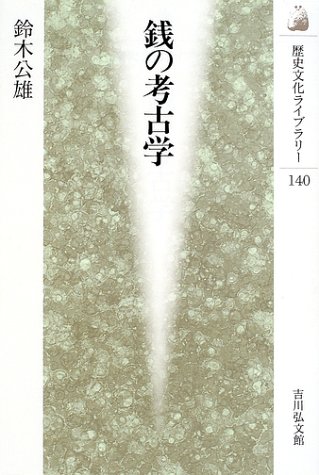2 0 0 0 自動車による日本一周における血圧の観察
1 0 0 0 出土六道銭の組合せからみた江戸時代前期の銅銭流通
- 著者
- 鈴木 公雄
- 出版者
- 社会経済史学会
- 雑誌
- 社会経済史学 (ISSN:00380113)
- 巻号頁・発行日
- vol.53, no.6, pp.749-775, 1988
Although the significance of the archaeological approaches has been neglected in the historical study of the Edo period, the present paper, by combining archaeological materials with historical documents, aims at illuminating the Tokugawa government's monetary policy in the seventeenth century. Numerous copper currencies discovered from 153 graves of that period are undoubtedly important archaeological materials to specify the currencies in circulation. These currencies called Rokudosen (六道銭), buried as grave goods, can be classified into the four major types: the imported Chinese currencies (Toraisen 渡来銭), Kokan'eitsuho (古寛永通宝 first issued in 1636), Bunsen (文銭 in 1668) and Shinkan'eitstuho (新寛永通宝 in 1697). The patterns of their frequency distributions, analyzed by "frequency seriation" which is commonly used in the chronological study of prehistoric archaeology, indicate that the replacement of Toraisen by Kokan'eitstuho was achieved promptly. On the other hand, the transition from Kokan'eitsuho to Bunsen and from Bunsen to Shinkan'eitsuho required rather long duration. It is worth noting that the above observation corresponds to the descriptions of some historical documents on the government's monetary policy. The documents such as Shukubashiryo (宿場史料) indicate that the government intended to exclude the older, imported currencies, and that the government prohibited their use in 1670. The validity of these descriptions was hardly demonstrated in the previous studies; however, the result of "frequency seriation" obtained from the excavated currencies represents that the government's policy was effectively carried out. The consistency of the government's monetary policy, which is partly reflected in some documents, can be more clearly characterized by synthesizing both archaeological and historical evidence.
1 0 0 0 古戦場の考古学 : 最近のアメリカ歴史考古学の新しい試み
- 著者
- 鈴木 公雄
- 出版者
- 公益財団法人 史学会
- 雑誌
- 史学雑誌 (ISSN:00182478)
- 巻号頁・発行日
- vol.109, no.11, pp.1989-1991, 2000
1 0 0 0 IR 出土備蓄銭と中世後期の銭貨流通
- 著者
- 鈴木 公雄
- 出版者
- 慶應義塾大学
- 雑誌
- 史学 (ISSN:03869334)
- 巻号頁・発行日
- vol.61, no.3, pp.225-280, 1992
一 出土貨幣研究の目的 (一) 経済活動復元の資料としての出土貨幣 (二) 出土備蓄銭の考古学的資料整備 (三) 出土備蓄銭の考古学的分析と中世貨幣経済史への接近二 出土備蓄銭の研究史 (一) 出土備蓄銭発見史 (二) 戦前の備蓄銭研究と基本的分析方法の確立 (三) 戦後の備蓄銭研究の進展 (四) 備蓄銭研究と中世経済史 (五) 最近の備蓄銭研究の動向三 出土備蓄銭の集成と概要 (一) 出土備蓄銭の集成 (二) 出土備蓄銭の銭種構成 (三) 最新銭による上限年代の設定 (四) 備蓄銭の出土状況と埋納方法 (五) 備蓄銭出土記録の問題四 出土備蓄銭の時期区分 (一) 備蓄銭埋納風習の成立時期 (二) 出土備蓄銭の時期区分 (三) 時期区分と実年代との相関 (四) 各時期の備蓄銭の分布とその特徴五 出土備蓄銭の銭種組成 (一) 全備蓄銭の銭種組成とその数量比 (二) 上位二〇種銭種組成の分析 (三) 銭種組成の時期別変化 (四) 備蓄銭の分析結果の要約六 出土備蓄銭と中世後期の銭貨流通 (一) 備蓄銭と精銭・悪銭 (二) 永楽通宝の諸問題 (三) 銭貨からみた中世と近世
